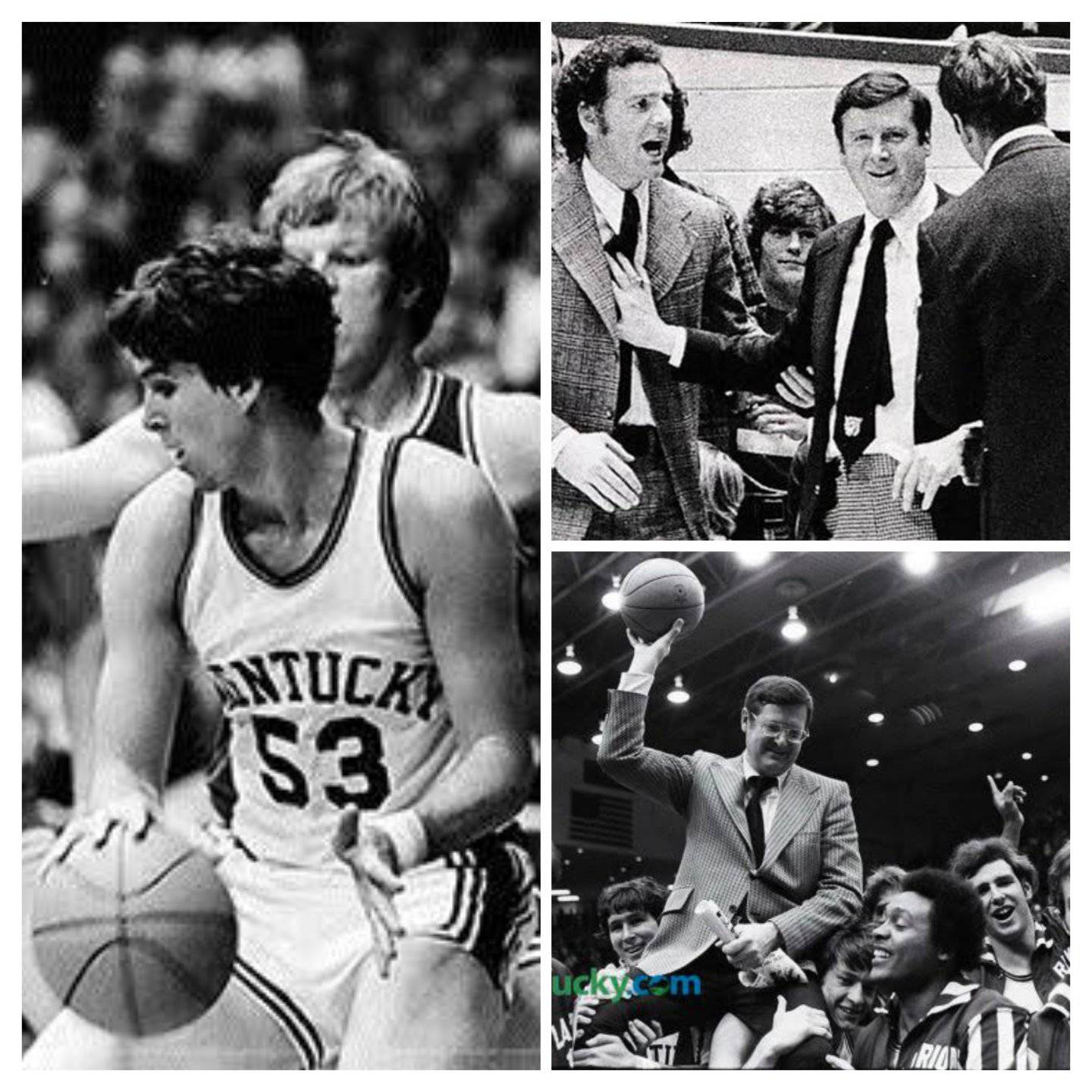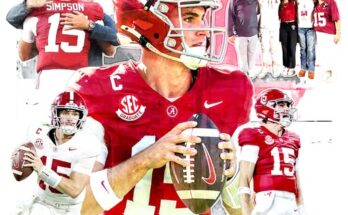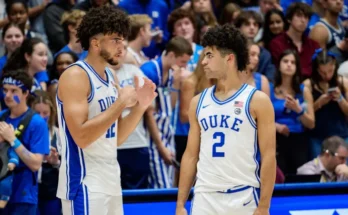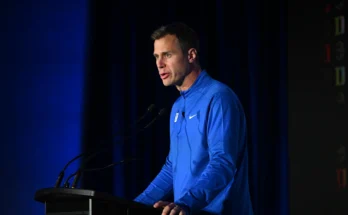The Infamous 1975 Clash: When Bobby Knight’s Slap Ignited College Basketball’s Most Fiery Rivalry
On March 22, 1975, the sports world held its breath, acutely aware that something monumental was brewing in Dayton, Ohio. The air crackled with an almost tangible tension as the unbeaten Indiana University Hoosiers prepared to face the University of Kentucky Wildcats in the NCAA Mideast Regional final. This wasn’t merely another basketball game; it was a deeply personal grudge match, a clash of titans with long-simmering animosity threatening to boil over at any moment. For months, the impending collision had been the talk of college basketball, a narrative fueled by the starkly contrasting personalities of the two head coaches: Kentucky’s composed and cerebral Joe B. Hall, and Indiana’s fiery, unpredictable Bobby Knight. Knight, already known for his explosive temperament, had been actively stoking the flames, often taking thinly veiled jabs at the Wildcats and their program, while Hall, ever the gentleman, largely kept his responses measured, adding to the psychological warfare. This was not just a regional final; it was a showdown years in the making, a culmination of recruiting battles, philosophical differences, and the inherent, intense regional pride that defined both fan bases. Every dribble, every pass, every shot felt loaded with meaning, the weight of expectation heavy on the shoulders of these young athletes. The game itself was a hard-fought, physical affair, as expected. Neither team was giving an inch, and the lead changed hands multiple times, each possession a testament to the skill and grit of both squads. The Hoosiers, led by the incomparable Quinn Buckner and Scott May, demonstrated the disciplined, fundamentally sound basketball that had carried them to an undefeated record. The Wildcats, with Jack Givens and Kevin Grevey leading the charge, responded with their characteristic toughness and resilience, refusing to be intimidated by Indiana’s undefeated aura. The intensity of the contest was palpable, mirrored by the roaring crowd, a sea of red and blue, each cheer and groan amplifying the drama unfolding on the court. Every foul call was met with a chorus of boos or cheers, depending on allegiances, and the referees were constantly working to keep the peace, acutely aware of the potential for things to escalate. The physicality of the game bordered on aggressive, with bodies constantly colliding and players frequently jawing at each other, yet beneath the surface of hard fouls and heated exchanges, a deeper current of animosity was running, an undercurrent that had been building between these two programs for years.
Then, with just under a minute left in the first half, it happened. A whistle blew, signaling a foul, and in the ensuing stoppage, a sequence of events unfolded that would etch itself into the annals of college basketball history. The exact catalyst remains a subject of debate, a Rorschach test for fans of either side, but the outcome was undeniable and shocking. As players milled about, preparing for the free throws, Bobby Knight, already seething from what he perceived as a series of unfavorable calls, suddenly strode purposefully towards the Kentucky bench. His face was a mask of incandescent rage, eyes narrowed, jaw set, and a palpable tension emanated from him. Joe B. Hall, ever the calmer presence, seemed to anticipate Knight’s approach, a wary expression on his face as he turned to confront the advancing Indiana coach. Words, sharp and accusatory, were exchanged, though their precise content has been lost to time, swallowed by the roar of the crowd and the sheer chaos of the moment. Then, in a stunning display of unbridled fury, Knight extended his hand and, with a swift, open-palmed motion, struck Joe B. Hall on the back of the head. The sound, if any, was swallowed by the sudden gasp that rippled through the arena, followed by a momentary, stunned silence. It was a slap heard ’round the college basketball world, an act of aggression that transcended the boundaries of competitive rivalry and plunged directly into the realm of personal affront. Hall recoiled, visibly shocked, his composure momentarily shattered by the audacious physical contact. His players, seeing their coach assaulted, surged forward, their faces contorted with a mixture of disbelief and outrage. The officials, already scrambling to contain the boiling tension, rushed in to separate the two coaches, their whistles blowing frantically, attempting to restore some semblance of order amidst the pandemonium that had erupted. The incident was instantaneous, yet its impact was immediate and profound, transforming the already heated contest into something far more visceral and primal. The arena, which had been buzzing with anticipation, now throbbed with a mixture of shock, anger, and a bizarre, almost morbid fascination. Spectators leaned forward in their seats, whispering, pointing, trying to process what they had just witnessed, unable to believe that a respected coach had resorted to such a public display of aggression.
The aftermath was chaotic. Players from both benches were involved in heated exchanges, coaches and officials desperately working to prevent a full-blown brawl. Knight was quickly assessed a technical foul, and the game, after a lengthy delay, eventually resumed. But the dynamic had fundamentally shifted. The slap wasn’t just a moment of ill-temper; it was a physical manifestation of the deeply ingrained animosity between these two programs, a symbolic act that ignited a rivalry into a raging inferno. For Kentucky, the incident galvanized them. They played with an almost vengeful intensity, fueled by the perceived disrespect shown to their coach. For Indiana, the technical foul and the subsequent disruption seemed to momentarily throw them off their game, though their resolve remained. The rest of the game was played under a cloud of simmering resentment, every possession a battle, every whistle a potential flashpoint. The Hoosiers ultimately prevailed, extending their undefeated season and advancing to the Final Four. But their victory was overshadowed, at least in the immediate aftermath, by the indelible image of Knight’s hand striking Hall. The media frenzy was instantaneous and immense. Newspapers across the country splashed headlines about the “slap” and the “Knight incident,” the story dominating sports talk and news cycles. The public, always eager for a dose of drama, was captivated. Opinions were sharply divided: some condemned Knight’s actions as an unforgivable display of poor sportsmanship, a stain on the game; others, particularly those who admired his fierce competitiveness, defended him, arguing that it was simply a manifestation of his intense desire to win, a momentary lapse in judgment fueled by the pressure of the moment. The NCAA, however, took the matter seriously. Knight was reprimanded, though no further disciplinary action was taken at that time, a decision that drew criticism from some corners. Yet, the lasting impact of the incident wasn’t just about the immediate disciplinary consequences; it was about the way it irrevocably altered the landscape of the Kentucky-Indiana rivalry.
The 1975 slap became the defining moment in the storied rivalry, a touchstone that fans and commentators would refer back to for decades. It elevated the intensity of future matchups to an almost unbearable level, each game imbued with the weight of that singular, shocking moment. The two programs, already fierce competitors, now had a personal vendetta, a narrative of revenge and redemption woven into every game they played. The animosity between Knight and Hall, once simmering, now openly festered, becoming a central theme in the rivalry. Subsequent games between the two teams were always circled on calendars, not just for their basketball significance but for the inherent drama that was guaranteed to unfold. The crowds were larger, louder, and more passionate, often chanting about the incident, reminding both coaches and players of the history that bound them. The players themselves absorbed the intensity, understanding that playing against the other school meant more than just winning; it meant upholding the honor of their respective programs, carrying the torch of a rivalry forged in a moment of pure, unadulterated passion and aggression. The incident served as a potent reminder of the raw emotion that permeated college sports, particularly in a sport like basketball where coaches are so central to the team’s identity. It was a stark illustration of how competitive fervor could sometimes spill over, transforming a sporting contest into something far more personal and dramatic. In the years that followed, the Kentucky-Indiana rivalry produced countless memorable games, moments of individual brilliance, and strategic masterpieces. But beneath it all, the shadow of March 22, 1975, always loomed. The slap became more than just an event; it became a symbol, representing the deep-seated rivalry, the clashing personalities, and the absolute unwillingness of either program to concede an inch. It cemented the Kentucky-Indiana rivalry as one of the most intense and captivating in all of college sports, a rivalry built not just on championships and tradition, but on a moment of shocking, unforgettable human drama that truly set college hoops on fire. Even today, decades later, the mention of the 1975 incident between Knight and Hall still elicits strong reactions, a testament to its enduring power and its central role in defining one of college basketball’s most fierce and enduring rivalries.



